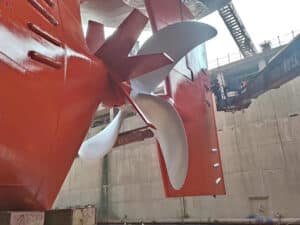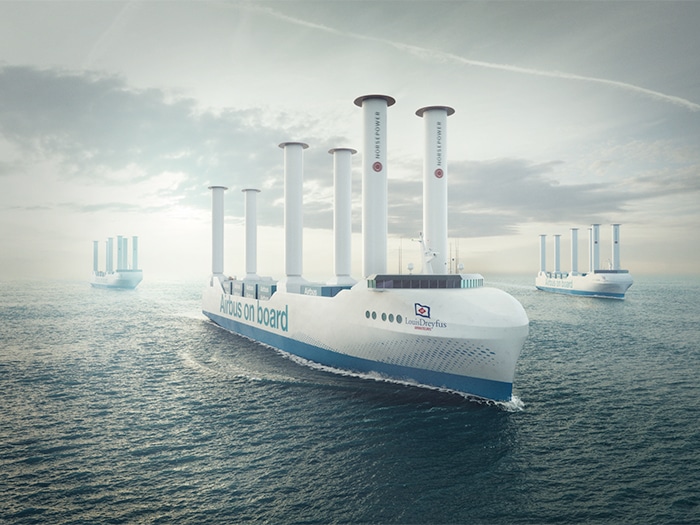
Airbus ship rotor sail order is a game changer for auxiliary wind propulsion
Written by Nick Blenkey
Norsepower rotor sails on Airbus ships will feature brand new Norsepower Sentient Control [Image: LDA]
This past year has been a good one for auxiliary wind propulsion as a growing number of charterers look to the technology as a means of cutting carbon across their supply chains. One of those charterers is Airbus, and its decision to include rotor sails on three new vessels it will charter from Louis Dreyfus Armateurs (LDA) has brought Finnish rotor sail pioneer Norsepower Oy its largest order yet — and is, in fact, the largest order thus far placed in the mechanical sails market.
The new low-emission vessels, which will be used to ship aircraft components for Airbus, will each be powered by a combination of six 35-meter tall Norsepower rotor sails and two dual-fuel engines running on maritime diesel oil and e-methanol. Additionally, routing software will optimize the vessels’ journey across the Atlantic, maximizing wind propulsion and avoiding drag caused by adverse ocean conditions.
NEW NORSEPOWER TECH
The rotor sails on the Airbus ships will feature the brand new patented Norsepower Sentient Control (NPSC), a real-time force measurement, control and savings reporting system. This world-first tool enables each rotor to be controlled individually. This optimizes efficiency by managing the complex aerodynamic interactions between the sails and the hydrodynamic behavior of the vessel. Extensive CFD (computational fluid dynamics) and wind tunnel tests have been carried out during the design phase to optimize the sail arrangement and design.
“This fleet-wide deal is a game changer for the whole auxiliary wind propulsion industry,” said Tuomas Riski, CEO of Norsepower. “Firstly, it is the biggest deal ever made in the mechanical sails market – and, in a world first, it includes our brand new Norsepower Sentient Control tool. We are honored that the first charterer to utilize this advanced control system is Airbus, the foremost expert in aerodynamics in the world. We thank LDA and Airbus for being forerunners of this industry – and look forward to our continued cooperation!”
MAJOR CO2 SAVINGS
Transporting aircraft subassemblies between Saint-Nazaire, France, and the Airbus single-aisle aircraft final assembly line in Mobile, Ala., the new fleet is expected to reduce average annual transatlantic CO2 emissions from 68,000 to 33,000 tonnes by 2030. This will contribute to Airbus’ commitment to reduce its overall industrial emissions by up to 63% by the end of the decade, compared to 2015 as a baseline year, in line with the 1.5°C pathway of the Paris Agreement.
“While the IMO has set challenging targets to bring shipping to net-zero, wind propulsion is considered as a viable element of the sustainable energy mix for seagoing ships. We are proud to be part on the energy transition through our partnership with Norsepower to offer innovative solutions and sustainably driving change,” said Mathieu Muzeau, transport and logistics general manager at Louis Dreyfus Armateurs.




